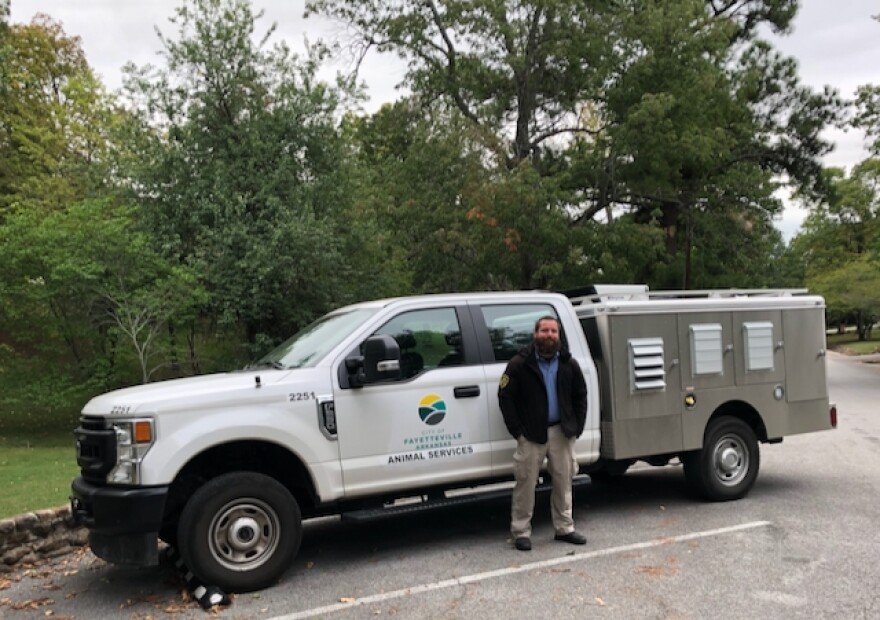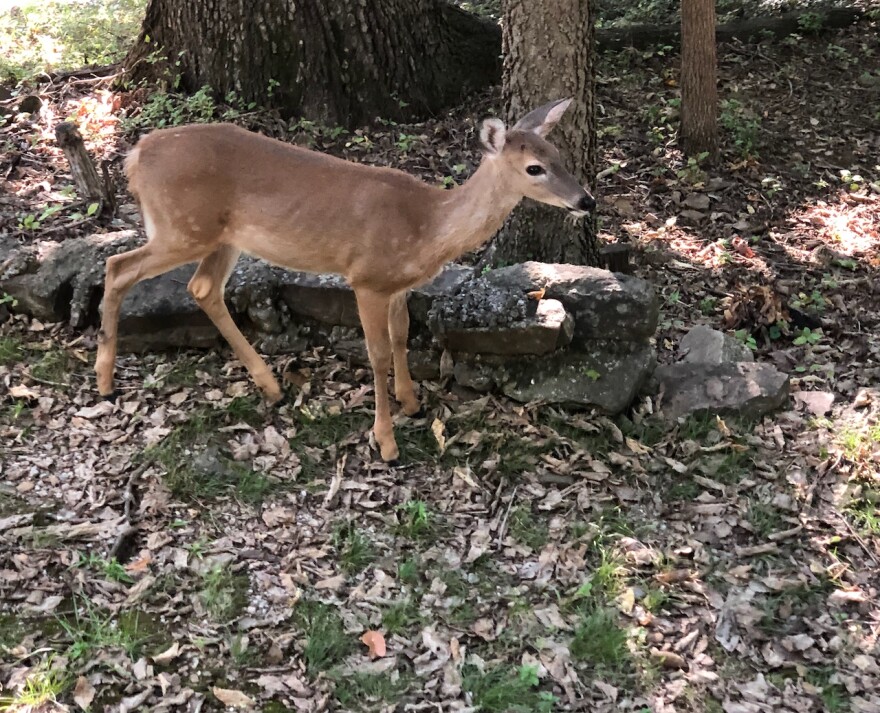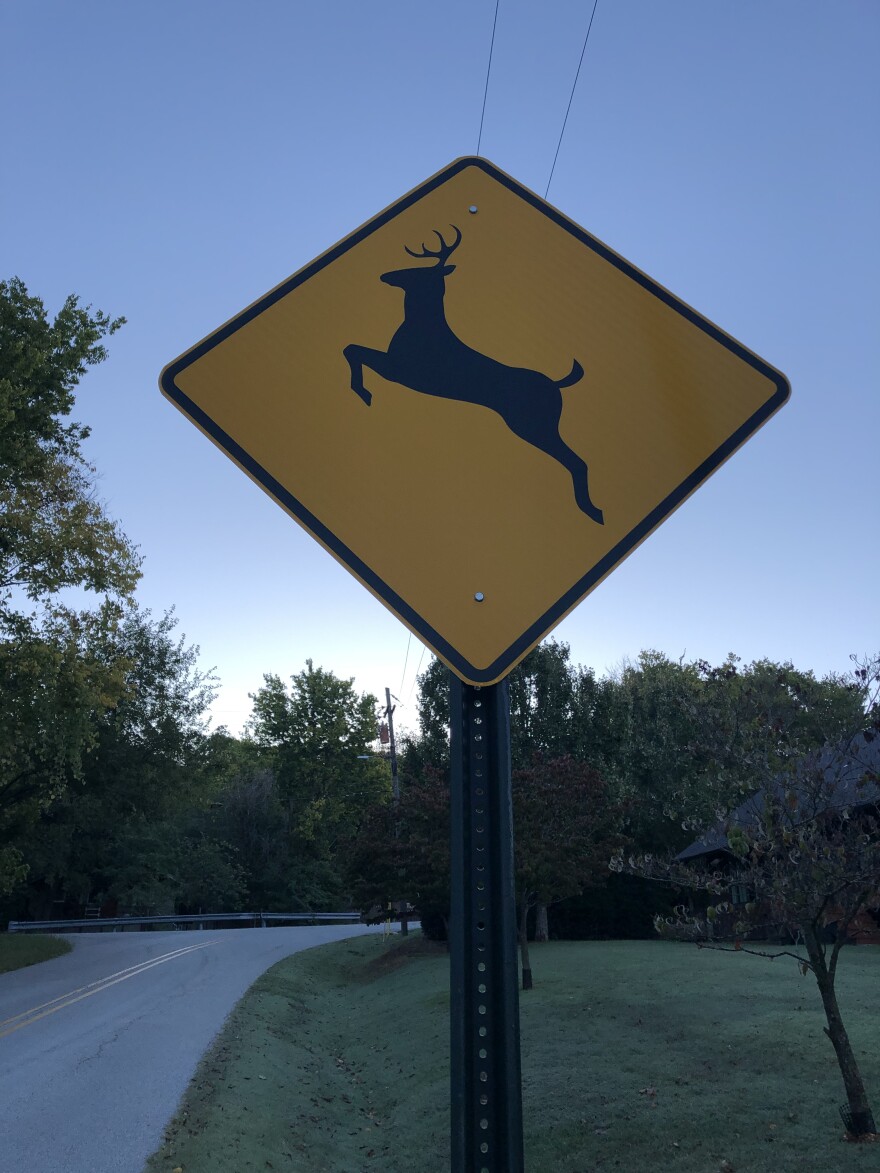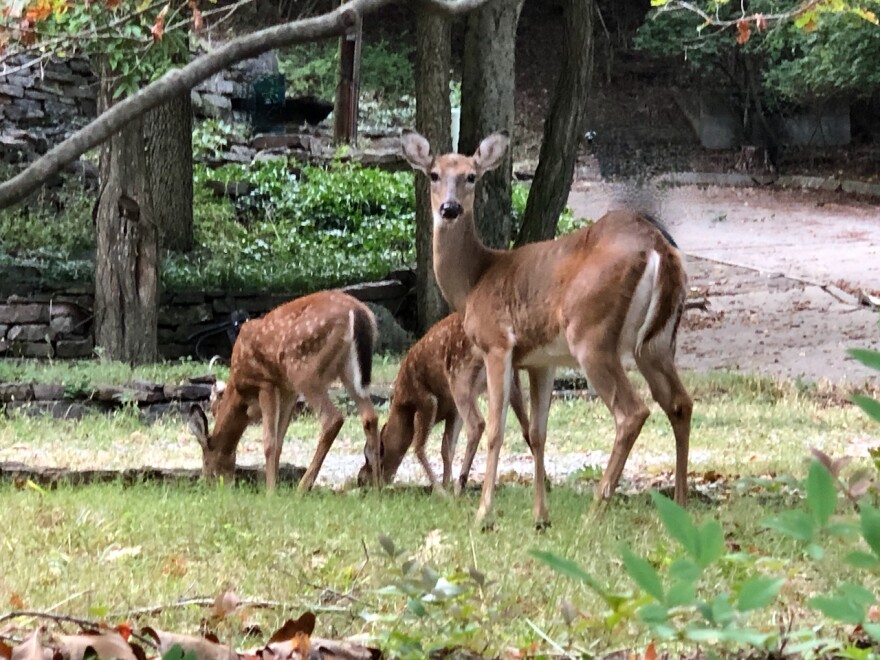White-tailed deer peacefully browse on a forested neighborhood in Fayetteville on a recent autumn morning wandering across lawns and gardens.
Ryan Gutierrez, Senior Animal Services Officer for Fayetteville Animal Services, monitors the city's deer.
"Deer cohabitate with us," he said "So with population increase and new construction, landscaping that is enticing to the deer as readily available forage to eat, and with natural predators driven off, it creates a breeding ground.”

Antlered bucks and does with six-month old twin fawns wander nearby feasting on a fresh crop of fall acorns in advance of winter. Deer startle easily and will bound across yards and roadways, creating a hazard for both animals and drivers. Gutierrez says he receives lots deer calls.
“On average I would say it's 200 to 250 a year," he said. "But now we've become more hands off. In the past we were actively euthanizing injured deer ourselves. We don't carry lethal force weapons. So we were having to sedate on the scene, bring the deer back to the city animal shelter, and euthanize with injection.”

Bucks can weigh up to 160 pounds, so present a dangerous challenge for local animal services staff to manage. Instead, fatally injured deer cases are now referred to local police or local Arkansas Game & Fish Commission agents.
Ralph Meeker is AGFC's deer program coordinator. He says no deer census exists, but the agency is monitoring growing deer densities across the state.
“Counting deer, there are a few methods that we use," he said, "trail camera surveys, we do spotlight surveys, we do thermal imagery surveys and now that we have access to drones, we’re dabbling in doing aerial thermal surveys.”
The agency, he explained, is responsible for restoring white-tailed deer in the state, which, a century ago, had disappeared from the landscape.
“In the early 1920s through the 1950s we restocked deer from several states in an effort to repopulate Arkansas," he said. "That's because due to unregulated hunting in the late 1800s and early 1900s, deer almost went extinct, believe it or not, here in Arkansas.”
Ozark deer herds are genetically linked to remnant ancestral herds, research shows, but most white-tailed deer alive today trace back to Wisconsin deer.

“We have higher deer densities in South Central Arkansas, what we call our pine country or our timber country," Meeker said. "But over time, what we're starting to see is that northwest Arkansas counties are starting to catch up.”
Because cities and towns, Meeker said, provide secure habitat for wild deer.
“Deer are habitat generalists and that's one of the great things about white-tailed deer, is they're very adaptable to their surroundings. And so they're finding that in urban large green spaces there's great things to eat. And they're learning that by having their fawns closer to human occupied spaces that predation from things like coyotes and bobcats is going down, so there's survivability of their fawns.”
Meeker said licensed hunters today play a key role in keeping white-tailed deer populations in check, with hundreds of thousands legally harvested annually in Arkansas.
Chronic Wasting Disease, or CWD, is also thinning herds. The fatal neurological disease, which began to sicken deer, elk and moose in Colorado in the 1960s, was first documented on the Buffalo National River watershed in the winter of 2016. Surveillance maps show CWD has since spread to 18 counties in Arkansas, most concentrated in Boone, Carroll, Newton and Madison Counties. Of those, twenty-eight cases have been confirmed in Washington County.

Fayetteville Animal Services officer Ryan Gutierrez says signs of CWD infection are easy to spot.
“Symptoms would be almost a zombie-like state because it's a neurological, something you see in raccoons that have distemper — drooling and wasting away,” he said. The public is warned to contact wildlife officials if they spot a sick deer. Feeding deer, experts say, can cause the disease to quickly spread, due to infected deer eating in close proximity.

To educate the public, Fayetteville posts a comprehensive deer management page.
“There’s a great slideshow about options to reduce the population, as well as about chronic wasting disease," Gutierrez said. "And there's information our city ordinance in regards to feeding deer which is against the law.”
Deer tend to flock to bird feeders, enjoying the seed, but certain residents also put out corn, fruit and vegetables, especially in Eureka Springs where lots of wildlife enthusiasts reside.
“They’ll be times on certain mornings I’ll drive around and I’ll easily count a hundred deer,” said long-time Eureka Springs Animal Control Officer Jim Evans. An overabundance of nuisance deer which began to appear fifteen years ago, prompted voters to approve a limited number of urban bow hunting permits.
“I think they found that really didn't work well inside the city,” Evans said.
Because residents opposed to hunting deer banged pots and pans to drive them away from hunters’ tree stands in Eureka. The city has since outlawed feeding deer within city limits, which has resulted in a population decline, Evans said, citing deer-car collision data.
“I would be involved in 25 to 45 incidents a year. But now, I'm involved in 15 to 20.”
Evans said urban dwellers need to learn to safely cohabitate with deer.
“And always remember that that you're the one that moved into their environment. They didn't move into ours.”

Wildlife experts warn drivers to scan roadways at dawn and dusk for deer crossings, especially during autumnal breeding and hunting seasons. Bucks by age two will migrate to diversify the species’ gene pool, maintaining healthy deer on our landscapes.









